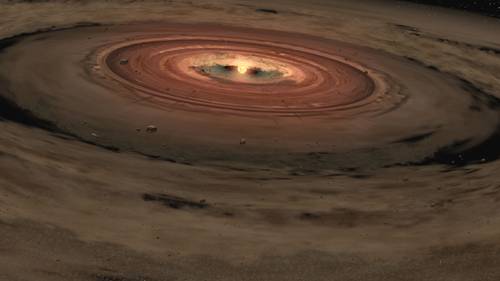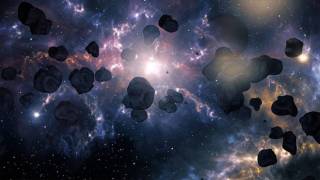Solar System May Be Older Than Thought
Source: space.com

The solar system may be up to two million years older than previously thought, a new study has found.
Researchers studying bits of a meteorite discovered that the space rock was 4.5682 billion years old, predating previous estimates of the solar system’s age by up to 1.9 million years. This adjustment, though ever so slight, should help astronomers better understand how the sun and planets formed.
"We believe that, right now, this is the most precise and accurate date for the age of the solar system," said study co-author Meenakshi Wadhwa of Arizona State University.
Meteorite detective story
Wadhwa and colleague Audrey Bouvier, also of ASU, made the find while studying a meteorite called NWA 2364, which fell to Earth in Morocco in 2004. They examined a 1-centimeter chunk of the meteorite known as a calcium-aluminum-rich inclusion, or CAI.
Inclusions are minerals that get trapped inside meteorites as the space rocks are forming. Scientists believe CAI’s were among the first solids to condense out when the sun and planets were forming, so CAI ages are good representations of the solar system’s age.
Wadhwa and Bouvier used lead-lead dating, a technique commonly used to date meteorites, to figure out the CAI’s age. They measured the abundances of three lead isotopes - versions of the element with different atomic masses - in the CAI. Two of the lead versions form when uranium isotopes radioactively decay; the other one is not a decay product.
Comparing the amounts of the three lead isotopes, and relating those numbers to the known rates of uranium-isotope decay, gave the researchers their answer: 4.5682 billion years.
This number is only a hair older than previous estimates of the solar system’s age, which were chiefly gleaned from dating CAI’s in other meteorites. But the difference is real, according to Wadhwa.
"That’s the power of geochemistry," she told SPACE.com. "You can make very, very precise measurements."
Age of the solar system
And even such small adjustments to the solar system’s age can be very important to astronomers seeking to understand how the sun and planets formed.
As an example, Wadhwa and Bouvier cite the abundance of the isotope iron-60 in the proto-solar system. Iron-60 is radioactive, with a half-life of about 2.6 million years. Every 2.6 million years, half of the iron-60 in a given sample decays away.
So if you push the age of the solar system back by about two million years, that means there was almost twice as much iron-60 present during its birth than previously thought. And this increased concentration has consequences: it strongly supports the idea that a supernova exploded nearby during the solar system’s formation, injecting huge quantities of heat that helped nascent bodies differentiate.
"Iron-60 is kind of a smoking gun," Wadhwa said. "If present in certain abundances, it can only really be there because of a supernova injection."
Astronomers can do this sort of sleuthing with many different isotopes that have relatively short half-lives. So nailing down the solar system’s age precisely is key.
"It gives us a better understanding of the type of environment the solar system evolved in," Wadhwa said.
The researchers report their findings Aug. 22 in the online version of Nature Geoscience.
Article from: Space.com
Image: Source






















